Parts
Bicycle Axles: Definition, Types, Size, Buying Guide
In the world of cycling, one of the most crucial components that often goes unnoticed is the bicycle axle. These small yet essential parts play a pivotal role in the overall performance and safety of your ride. Whether you are an avid cyclist or a casual rider, understanding the intricacies of bicycle axles is indispensable. In this comprehensive guide, HookBike’s will delve deep into the world types of bicycle axles, covering everything from their definitions and types to sizes and a detailed buying guide, ensuring that you make informed decisions when it comes to your cycling needs.
Understanding Bicycle Axles: Definition and Function
A bicycle axle is a crucial component in a bicycle’s wheel assembly, and it plays a fundamental role in the functioning of the bike. Here’s a definition and an explanation of its function:
Definition
A bicycle axle is a rod or shaft that runs through the center of a bicycle wheel, connecting the hub of the wheel to the frame of the bike. It is typically a solid metal rod, and it can be found at the very core of the wheel assembly.
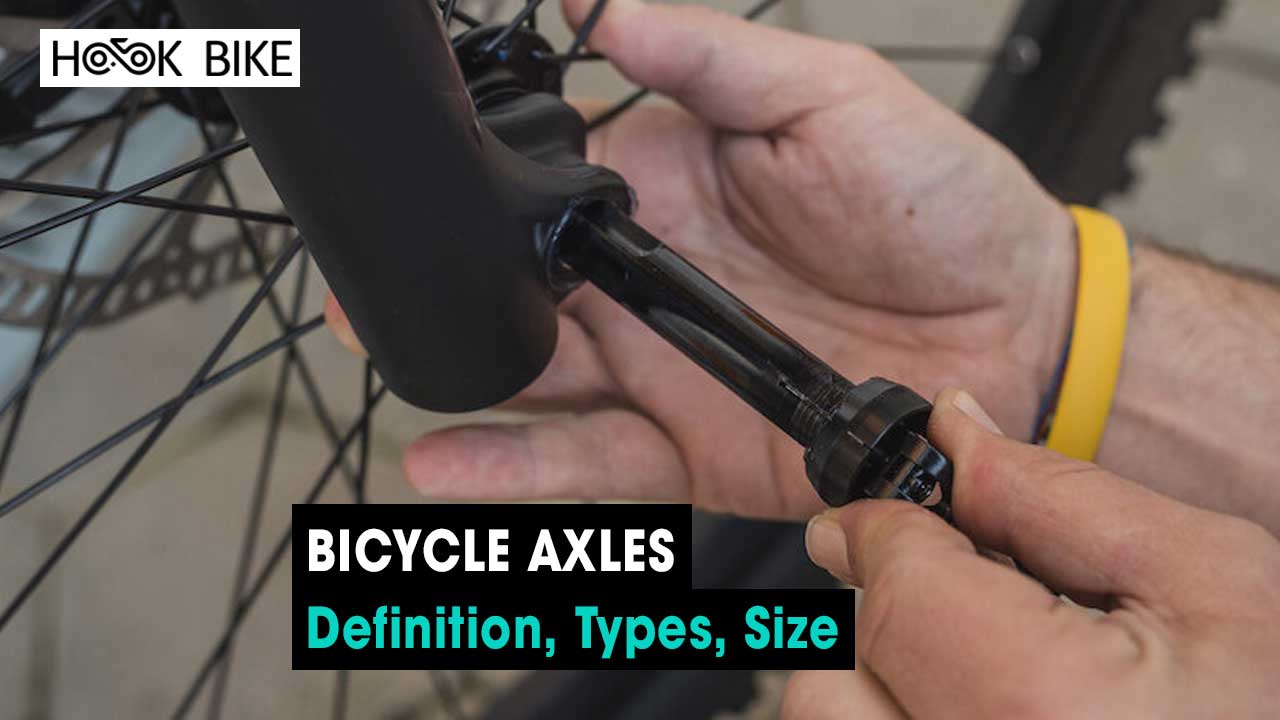
Function
The bicycle axle serves several important functions:
- Wheel Attachment: The primary function of the axle is to attach the wheel to the bicycle frame. The axle is secured to the fork (front wheel) or the frame (rear wheel) and is responsible for holding the wheel in place.
- Weight Support: The axle is designed to bear the weight of the rider, the bicycle itself, and any additional loads (such as panniers or cargo). It must be strong and rigid enough to handle these forces without bending or breaking.
- Load Distribution: The axle distributes the load from the bicycle and rider to the hub and subsequently to the spokes. The spokes, in turn, transfer this load to the rim, which supports the tire. This distribution of forces allows the wheel to maintain its shape and strength.
- Facilitating Rotation: The axle provides a fixed axis for the wheel to rotate around. The hub of the wheel is attached to the axle, and when the axle turns, it causes the wheel to rotate. This rotation allows the bike to move forward.
- Bearing Support: Most bicycle axles include bearings within the hub, which enable the wheel to rotate smoothly. These bearings reduce friction and allow the wheel to spin freely. Proper maintenance of these bearings is essential for the wheel’s performance.
- Quick Release Mechanisms: In modern bicycles, many axles have quick-release mechanisms. These allow for easy removal and installation of wheels without the need for tools. Quick-release axles are common in road and mountain bikes.
The bicycle axle is a core component that connects the wheel to the bike’s frame, supports the weight of the rider and the bicycle, facilitates wheel rotation, and plays a critical role in distributing forces throughout the wheel assembly. It is essential to choose the right type and size of axle for your bicycle to ensure safe and efficient riding.
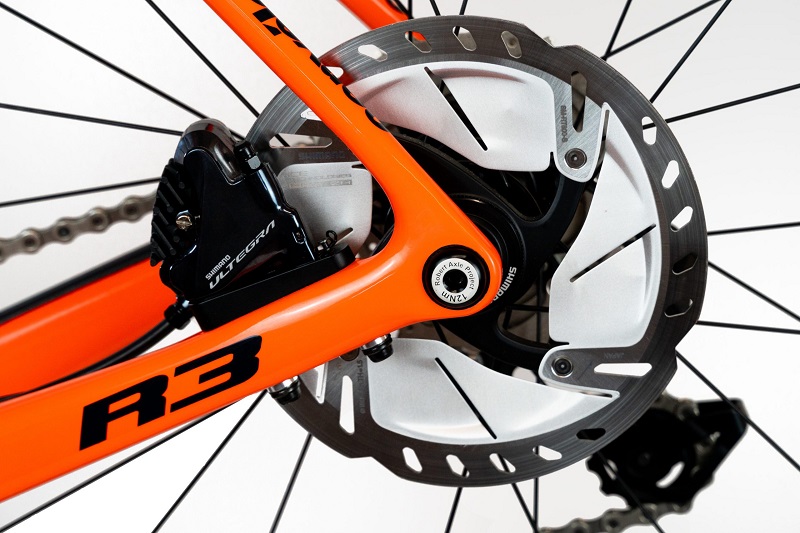
Types of Bicycle Axles: Exploring the Variety
Bicycle axles come in various types and designs, each suited for specific purposes, riding styles, and wheel configurations. Here are some of the common types of bicycle axles:
Solid Axles
Solid axles are straightforward, solid metal rods that pass through the wheel’s hub. They are often found on older or basic bicycles. They are durable but not as convenient for wheel removal as quick-release or through-axle systems.
Quick-Release Axles
Quick-release axles use a lever mechanism to allow for easy and tool-free removal of the wheel. These are commonly found on road bikes, hybrid bikes, and many entry-level mountain bikes. Quick-release axles are convenient for quickly changing flat tires or transporting your bike.
See more: What Is A Through Axle On A Bike?
Through-Axles (Thru-Axles)
Through-axles are found on many modern mountain bikes, especially those designed for more aggressive riding styles like downhill or enduro. These axles are thicker and more robust than quick-release axles, providing increased stiffness and stability to the wheel and frame. They usually require a tool for removal.
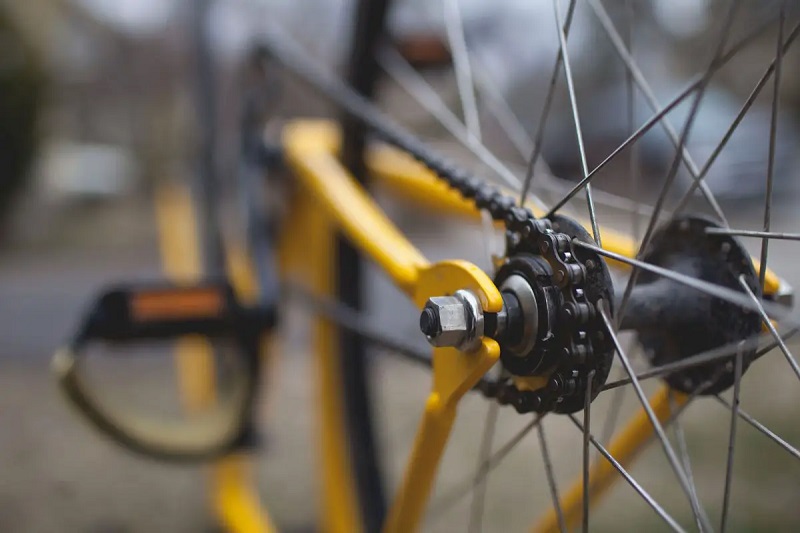
Bolt-On Axles
Bolt-on axles, as the name suggests, require a wrench or socket for removal. They are more secure and less prone to theft but are less convenient for quick wheel changes. These are often found on single-speed and fixed-gear bikes.
Nutted Axles
Nutted axles are similar to bolt-on axles but use nuts to secure the wheel. They are most common on older or budget-friendly bikes and provide good security.
Tandem Axles
Tandem bicycles, designed for two riders, typically have extra-long and reinforced axles to support the added weight and stress.
Track Axles
Track bikes have unique axles with threading that matches the rear dropouts. This design prevents the wheel from slipping in the dropouts during intense track racing.
Floating Axles
Some mountain bike suspension systems have floating axles, which allow the wheel to move slightly relative to the fork or frame. This can improve suspension performance on rough terrain.
Custom or Proprietary Axles
Some high-end bikes and wheelsets come with custom or proprietary axle designs, which are specific to a particular manufacturer or model. These are often optimized for the specific needs and characteristics of that bike or wheelset.
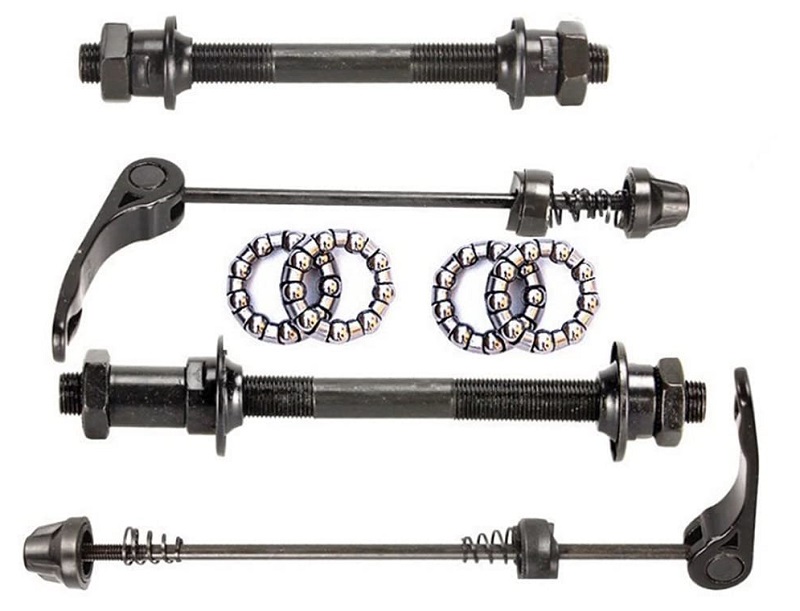
It’s crucial to choose the right axle type for your bike and riding style. Make sure to understand the axle type, size, and installation method to ensure compatibility when replacing or upgrading axles or wheels. If you’re unsure about the type of axle your bike uses, consult your bike’s user manual or seek advice from a bike shop or manufacturer.
Bicycle Axle Sizes: Matching the Right Size
Choosing the correct axle size is crucial for the proper functioning of your bike. Axle sizes are not universal, and they vary based on the type of bike you own. The most common axle sizes are:
- Standard Axle Size (9mm): Standard axles are prevalent in many road bikes and older mountain bikes. They are easy to find and replace, making them a convenient choice for many cyclists.
- Thru Axle Sizes (12mm, 15mm, 20mm): Thru axles come in different diameters. Mountain bikes often use 12mm or 15mm thru axles for front wheels and 12mm thru axles for rear wheels. Fat bikes and downhill bikes might use even larger sizes like 20mm for added strength and stability.
- Bolt-On Axle Sizes: Bolt-on axles also come in various sizes, and it’s essential to match the size accurately to your bike’s specifications.
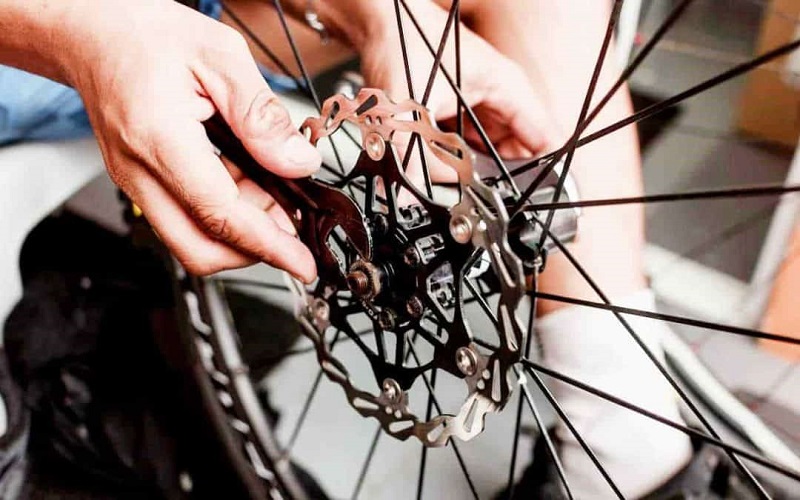
Bicycle Axles Buying Guide: Making Informed Choices
Purchasing the right bicycle axle involves considering several factors to ensure compatibility and optimal performance. Here’s a comprehensive buying guide to help you make informed decisions:
- Know Your Bike: Understand your bike’s specifications, including the type of axle it requires and the size. Refer to your bike’s manual or consult a professional if you’re unsure.
- Material Matters: Bicycle axles are commonly made from steel, aluminum, or titanium. Steel axles are durable and affordable, while aluminum and titanium axles are lightweight and corrosion-resistant. Choose the material that aligns with your budget and performance requirements.
- Consider the Type of Riding: The type of riding you do influences your axle choice. For example, if you’re into off-road biking, a thru axle provides better stability and prevents the wheel from shifting during rough rides.
- Budget and Brands: Set a budget for your axle purchase and explore reputable brands known for their quality and durability. Investing in a reliable brand ensures longevity and performance.
- Installation and Maintenance: Consider axles that are easy to install and maintain. Quick-release axles, for instance, are user-friendly and allow for quick wheel removal and installation, making them convenient for regular maintenance.
- Consult Experts: If you’re uncertain about which axle to choose, don’t hesitate to consult cycling experts or professionals at local bike shops. They can provide personalized recommendations based on your specific needs and preferences.
Conclusion: Elevating Your Cycling Experience
In conclusion, understanding the nuances of bicycle axles is essential for every cyclist. Whether you’re a casual rider or a professional cyclist, the right axle can significantly enhance your biking experience. By grasping the differences between axle types, knowing the correct sizes, and following a comprehensive buying guide, you can ensure that your bike operates at its best.
At HookBike, we prioritize your cycling satisfaction. Our range of high-quality bicycle axles caters to various bike types and preferences, ensuring that you find the perfect match for your ride. Elevate your cycling experience with our premium axles designed for performance, durability, and ease of use.

